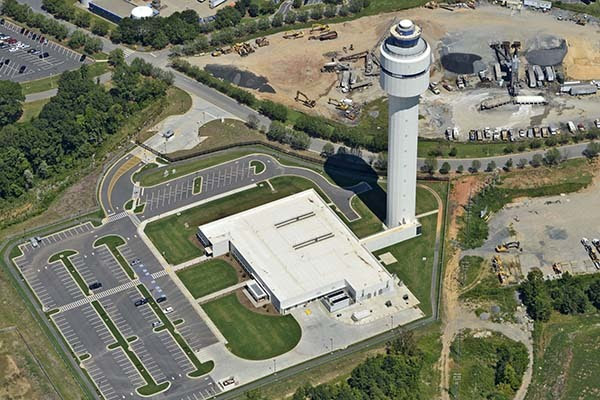The U.S. Department of Transportation’s Federal Aviation Administration today dedicated the newly commissioned and environmentally sustainable air traffic control tower at Charlotte Douglas International Airport.
“Aviation is an invaluable part of our American life and our national economy. The new, taller control tower will enable the airport to continue to expand its flight operations to grow alongside the vibrant Charlotte economy,” said FAA Deputy Administrator A. Bradley Mims.
The 370-foot-tall air traffic control tower has an 850-square-foot tower cab that provides air traffic controllers a bird’s-eye view of the airfield. At the base, a 42,000-square-foot building houses an expanded terminal radar approach control (TRACON) that handles flights departing and arriving into the Charlotte airspace. Both are designed to accommodate current and future operations.
“The commissioning of the new air traffic control tower by the Federal Aviation Administration is a testament to the importance of Charlotte in the National Airspace System,” said CLT Chief Executive Officer Haley Gentry. “The tower is equipped with the latest state-of-the art NextGen technology to keep up with the current and future demand of our growing airfield. This modern infrastructure is another display of the strong partnership we have at CLT and we are grateful to the FAA for this investment to make air traffic more efficient.”
The new Charlotte tower is the second-tallest tower in the nation after the 398-foot-tall tower at Hartsfield-Jackson Atlanta International Airport. The existing tower was commissioned in 1979. The facility’s operational growth, new air traffic control technology and the airport’s addition of new runways and taxiways made the height and size of the old tower obsolete.
A total of 179 FAA employees work at the Charlotte tower and TRACON – 136 in air traffic services and 43 in technical operations. Technical Operations employees install and maintain air traffic control equipment. The tower became operational in late February 2022. The estimated final cost of the project is approximately $94 million.
